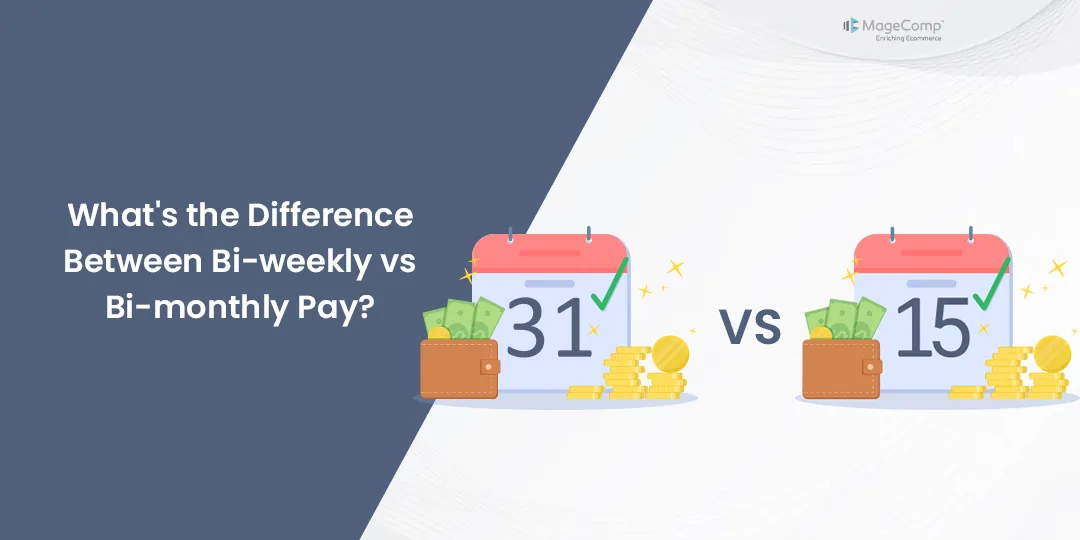In the realm of employment, the frequency at which you receive your pay can significantly impact your financial planning and budgeting strategies. Two common payment schedules are bi-weekly and bi-monthly pay. While they might sound similar, they have distinct differences that can affect your financial stability and management. Let’s delve deeper into what sets them apart and explore the pros and cons of each.
What is Bi-weekly Pay?
Bi-weekly pay is a payment schedule in which employees receive their wages or salaries every two weeks, typically resulting in 26 pay periods per year. This means that employees are paid once every two weeks, regardless of the number of days in each month. Bi-weekly pay schedules are often aligned with specific calendar days, such as every other Friday or Monday.
With bi-weekly pay, employees can expect a consistent paycheck frequency, making it easier to plan and budget for expenses. However, since months do not have an exact number of weeks, the number of days in each pay period may vary slightly. As a result, employees may receive different amounts in their paychecks from month to month.
What is Bi-monthly Pay?
Bi-monthly pay is a payment schedule in which employees receive their wages or salaries twice a month. Unlike bi-weekly pay, which occurs every two weeks, bi-monthly pay occurs twice within each calendar month. Typically, bi-monthly pay schedules are tied to specific dates, such as the 1st and 15th of the month or the 15th and the last day of the month.
With bi-monthly pay, employees can expect to receive their paychecks on a regular schedule, providing stability in terms of pay frequency. Each pay period generally covers approximately half a month’s work, resulting in 24 pay periods per year. This consistency in pay amounts can facilitate easier budgeting and financial planning for employees, as they know exactly when to expect their pay and how much they will receive.
Difference Between: Bi-weekly vs Bi-monthly Pay
Pros of Bi-weekly Pay:
- Consistency: Bi-weekly pay offers a regular and predictable schedule. Employees can anticipate when they will receive their paychecks, making it easier to plan finances.
- Simplicity: With a fixed interval of two weeks between pay periods, bi-weekly pay simplifies budgeting. Employees can allocate funds for expenses, savings, and investments with relative ease.
- More Pay Periods: Bi-weekly pay typically results in 26 pay periods per year, compared to other pay frequencies like semi-monthly (24 pay periods per year) or monthly (12 pay periods per year). This can provide employees with an additional paycheck during the year, offering extra financial flexibility.
- Aligned with Recurring Expenses: Bi-weekly pay often aligns well with recurring expenses such as rent or mortgage payments, which are commonly due on a monthly basis. This alignment can make it easier for employees to manage their cash flow.
Cons of Bi-weekly Pay:
- Varying Amounts: Since months do not have an exact number of weeks, the number of days in each pay period may vary slightly. As a result, employees may receive different amounts in their paychecks from month to month. This variability can make budgeting slightly more challenging.
- Longer Wait Period: With bi-weekly pay, there are longer intervals between paychecks compared to other pay frequencies such as weekly or semi-monthly. This longer wait period may require employees to budget more carefully to ensure they have enough funds to cover expenses between paychecks.
- Potential Cash Flow Issues: For employees who live paycheck to paycheck, the longer intervals between bi-weekly paychecks can sometimes lead to cash flow issues, especially if unexpected expenses arise. Proper budgeting and financial planning are essential to mitigate this risk.
- Dependence on Timing: Since bi-weekly paydays are often tied to specific calendar days, such as every other Friday or Monday, the timing of paychecks may not always align perfectly with individual financial obligations or bill due dates.
Pros of Bi-monthly Pay:
- Stability: Bi-monthly pay provides stability in pay frequency and amount. Employees receive their paychecks twice a month on fixed dates, making it easier to plan finances and budget effectively.
- Ease of Budgeting: With consistent pay amounts, employees can easily budget for expenses, savings, and investments. Knowing exactly when paychecks will be received helps individuals plan their financial obligations with confidence.
- Aligned with Monthly Expenses: Bi-monthly pay aligns well with monthly expenses such as rent or mortgage payments, which are typically due on fixed dates each month. This alignment can simplify financial planning and cash flow management.
- Predictability: Employees can rely on the regularity of bi-monthly paychecks, allowing for smoother financial planning and reducing uncertainty about income.
Cons of Bi-monthly Pay:
- Fewer Pay Periods: Bi-monthly pay results in fewer pay periods per year compared to bi-weekly pay. With only 24 pay periods annually, employees may receive slightly less income overall, potentially impacting their financial flexibility.
- Longer Time Between Paychecks: The longer interval between bi-monthly pay periods may require employees to budget more carefully to ensure they have enough funds to cover expenses between paychecks.
- Potential for Larger Paychecks: While consistent pay amounts can aid budgeting, larger paychecks from bi-monthly pay may also lead to the temptation of overspending, especially if individuals are not accustomed to managing larger sums of money at once.
- Less Flexibility: Bi-monthly pay may offer less flexibility for managing irregular expenses or unexpected financial needs, as there are fewer opportunities for income throughout the year compared to more frequent pay schedules.
Which is Better: Bi-weekly or Bi-monthly Pay?
Determining whether bi-weekly or bi-monthly pay is better depends on individual circumstances, preferences, and financial goals. Each pay frequency has its own advantages and drawbacks, and what works best for one person may not be ideal for another.
The choice between bi-weekly and bi-monthly pay ultimately depends on individual preferences and financial circumstances. Bi-weekly pay offers consistency and simplicity, while bi-monthly pay provides stability and ease of budgeting. Some may prefer the regularity of bi-weekly pay, while others may appreciate the stability of bi-monthly pay. It’s important to carefully consider these factors and choose the pay frequency that aligns best with your financial situation and goals.
Conclusion:
In conclusion, while bi-weekly and bi-monthly pay may seem similar on the surface, their distinct characteristics can significantly impact your financial planning and budgeting strategies. By understanding the differences between these pay frequencies, you can make informed decisions to optimize your financial well-being.












